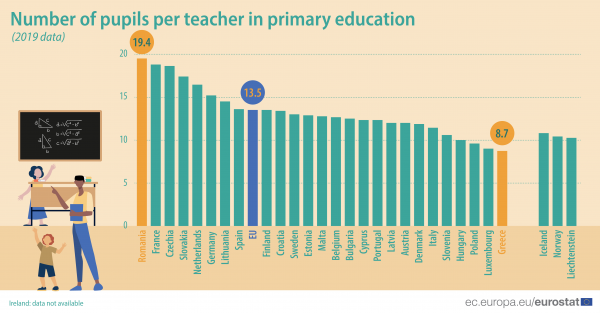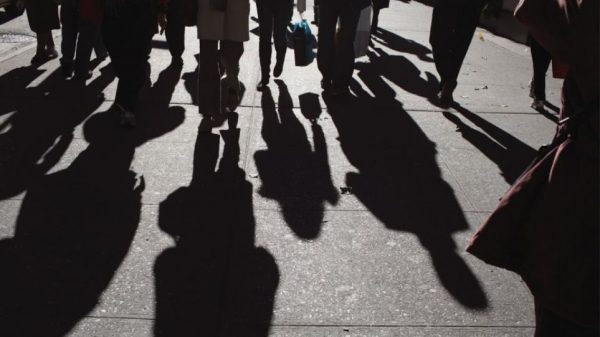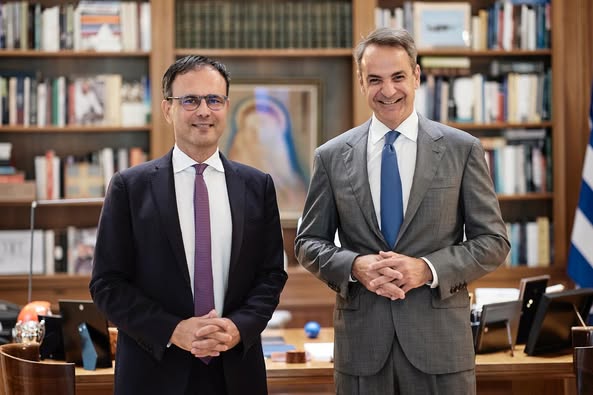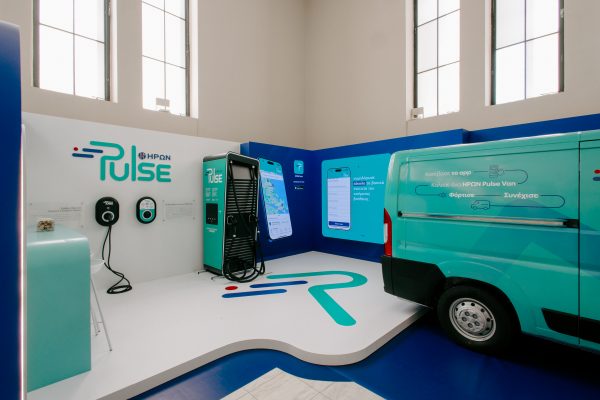
In 2019, there were 2.0 million teachers (85% women, 15% men) and 24.5 million primary school students in EU Member States, according to data released by Eurtostat.
In the EU, the average number of students per primary school teacher decreased slightly from 13.6 in 2018 to 13.5 in 2019. The lowest rates were recorded in Greece (8.7), Luxembourg (9.0) and Poland ( 9.6).
At the other end of the spectrum, Romania maintained the highest student-teacher ratio (19.4), followed by France and the Czech Republic with 18.8 and 18.7, respectively.

According to the announcement, “children usually enter primary education programs (classified as ISCED level 1) between the ages of 5 and 7”. These programs are designed to provide them with a solid foundation in reading, writing, and math, as well as a basic understanding of other subjects such as history, geography, natural and social sciences, art, and music.
The student-teacher ratio is calculated by dividing the number of equivalent full-time students by the number of equivalent full-time teachers working at ISCED level 1. The student-teacher ratio should not be confused with the average class size, as no special class is taken into account. cases, such as small groups of students with special needs or specific subject areas, or the difference between the number of teaching hours provided by teachers and the number of teaching hours provided for students.
Latest News

Airbnb: New Measures Add €600 in Extra Costs for Property Owners
Property managers face an immediate administrative fine of 5,000 euros if access to the inspected property is denied or any of the specified requirements are not met.

Economist: Greece Included in the Best Performing Economies in 2024
Meanwhile, Northern European countries disappoint, with sluggish performances from the United Kingdom and Germany.

EasyJet Expands Its Routes from Athens
The airline’s two new routes will be to London Luton and Alicante and they will commence in summer 2025.

Capital Link Forum Highlights Greece’s Economic Resurgence; Honors BoG Gov Stournaras
Capital Link Hellenic Leadership Award recipient, Bank of Greece Gov. Yannis Stournaras, an ex-FinMin, was lauded for his pivotal role during Greece’s economic recovery

Tourist Spending in Greece Up by 14%, Visa Card Analysis Shows
Greece’s capital Athens emerged as the most popular destination, recording a 17% increase in transactions with Visa cards, surpassing even the cosmopolitan island of Mykonos.

Inflation in Greece Unchanged at 2.4% in Nov. 2024
The general consumer price index (CPI) posted a 0.4% decrease in November compared to the previous month

2024 Christmas Holidays: Extended Shop Hours Schedule
The 2024 Christmas Holidays extended shop hours schedule commences on Thursday, December 12 and runs until the end of the year.

ELSTAT: Seasonally Adjusted Unemployment Down in October
The number of employed individuals reached 4,284,694, an increase of 67,723 compared to October 2023 (+1.6%) and 22,002 compared to September 2024 (+0.5%).

Greek PM’s Chief Economic Adviser Resigns
In the post on his Facebook page, Patelis did not disclose the reasons that led him to step down.

“Masdar Invests in the people of Greece and in the vision of TERNA ENERGY”
Four messages from the CEO of Masdar, the Arab renewable energy giant, after its acquisition of 70% of TERNA ENERGY













![Fraport: Πάνω από 35 εκατ. επιβάτες στα αεροδρόμια το 11μηνο – Πτώση στη Μύκονο [πίνακας]](https://www.ot.gr/wp-content/uploads/2022/06/fraport-90x90.jpg)

























![Fraport: Πάνω από 35 εκατ. επιβάτες στα αεροδρόμια το 11μηνο – Πτώση στη Μύκονο [πίνακας]](https://www.ot.gr/wp-content/uploads/2022/06/fraport-600x375.jpg)


 Αριθμός Πιστοποίησης Μ.Η.Τ.232433
Αριθμός Πιστοποίησης Μ.Η.Τ.232433